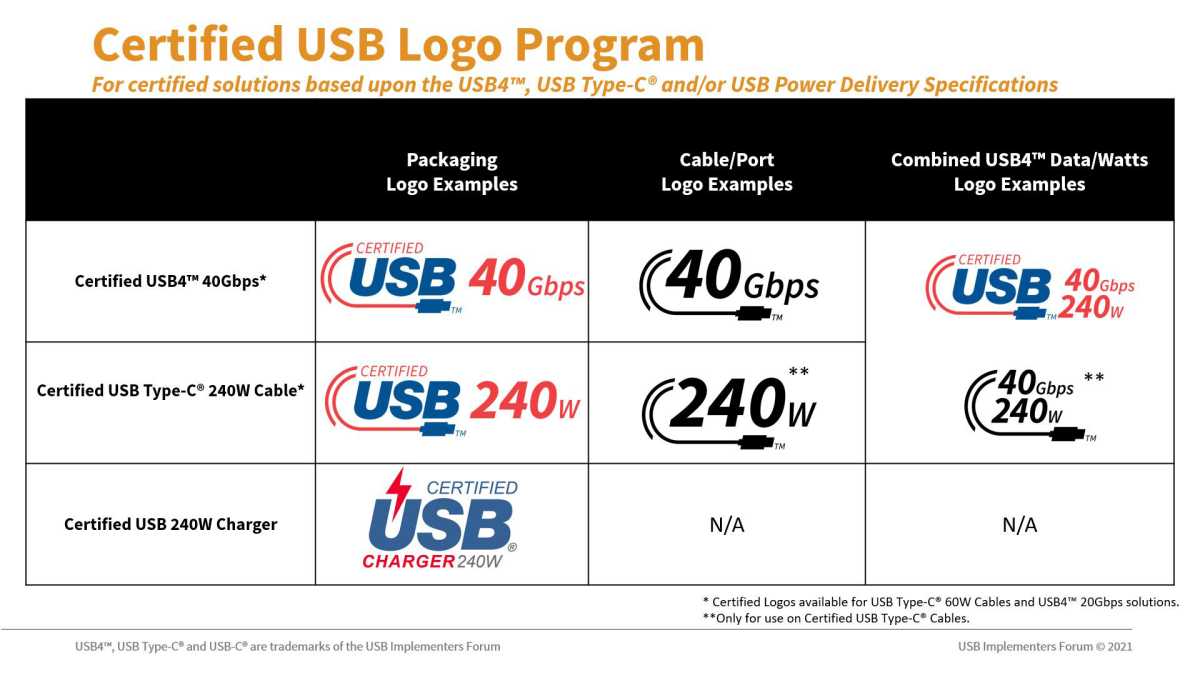The problem with USB-C (technically “USB Type C” but nobody calls it that) is that it’s one connector with a lot of great properties (bi-directional, symmetrical, slim, locking) that supports a lot of technologies but mandates very few. When you see a USB-C port on a device, you don’t know what does and does not support it. Can you charge your device there? Is it data transfer only? How fast? What about DisplayPort?
Buying cables can be just as bad. You may have no idea if a cable supports power delivery, or if it does what the wattage limits are. You don’t know if that USB-C cable supports faster data transfer speeds. And if you have Apple gear, where Thunderbolt compatibility is often key, there’s a whole other layer of specifications to worry about.
The easy way out for Apple users is to buy Apple’s own branded cables, which tend to support all the power and data transfer needs of its own devices. But Apple’s cables are expensive, only come in white, and only come in two lengths: 1 meter and 2 meters.
USB-IF to the rescue (sort of)
The USB Implementers Forum (USB-IF) seems to have recognized what a mess this is and will address it with a set of new logos (shown below). A USB 4 cable will proudly say “40Gbps” in the logo, and a cable that supports the USB Power Delivery 3.1 specification will have either 60W or 240W displayed, to show which of the two maximum power ratings it supports.

USB-IF
Certified cables will display these logos on their packaging or possibly on the cable itself, or on the company’s product page on their website. It’s a good thing to look for if you’re buying USB-C cables, but it only goes so far for Apple users.
When it comes to charging, you want a USB-C cable that supports Power Delivery at the highest rates. Apple’s power adapters top out at 96W, and while that is only used on certain 16-inch MacBook Pro models, the 61-watt and 45-watt power adapters are strong enough that you want to make sure your cable’s up to the task.
Similarly, Apple’s support of high data transfer speeds means that a USB 4 cable with support for 40Gbps is highly desirable, too. We covered this when USB 4 was announced, but the USB 4 standard basically brings the spec up to Thunderbolt 3 performance levels. Apple only just recently started officially supporting USB 4 in Macs with the M1 chip, but the company has supported Thunderbolt 3 for years, which means you need a 40Gbps cable with a Type-C connector.
In other words, if you have Apple stuff with a USB-C port on it and you want to buy a third-party cable that is likely to work with all your current and future Apple stuff, looking for that 40Gbps and 240W logo is a really good idea. You’re only going to see that 40Gbps logo on USB4 certified cables, which means it also supports DisplayPort 2.0, so you should be covered for all your Apple peripheral needs, including monitors. While USB 4 certification is not technically the same thing as Thunderbolt 3, the whole point of USB 4 is to essentially raise the minimum bar to the level of Thunderbolt 3.
Of course, the problem with these logo programs is that they’re never mandatory and can take a while to become commonplace. And they only ensure that a cable’s design meets certain requirements, not that the cable will be durable or flexible or doesn’t get too hot when charging. A cable that does not carry these logos could be great, and a cable that does carry them might work well but falls apart after just a few months. Still, some assurance is better than none, and we would recommend that if you’re buying a non-Apple-brand USB-C cable you look for these logos.
I have written professionally about technology for my entire adult professional life – over 20 years. I like to figure out how complicated technology works and explain it in a way anyone can understand.

